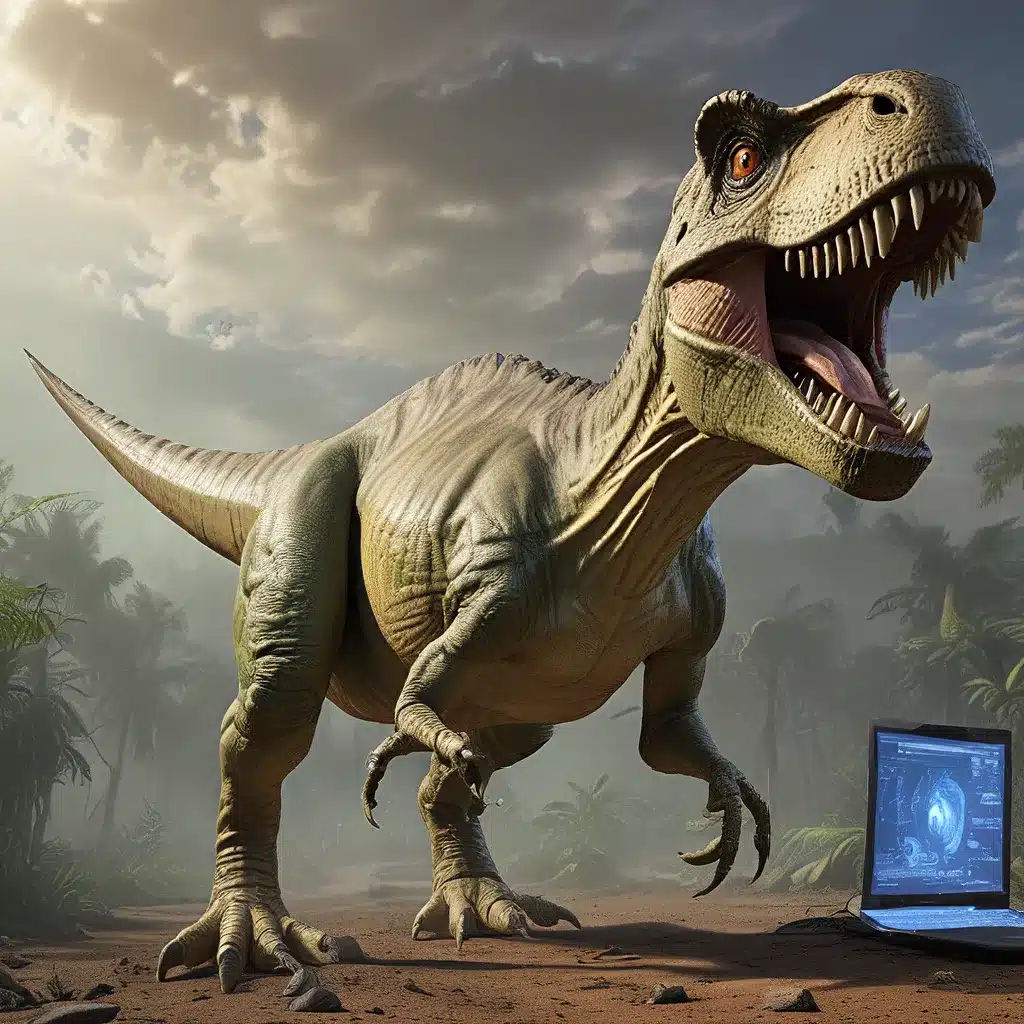
In the ever-evolving landscape of archaeology and paleontology, the digital revolution has brought about a transformative shift in the way we study, preserve, and share our understanding of prehistoric life. From the towering T. rex to the enigmatic Velociraptor, the world of dinosaurs has been forever changed by the integration of cutting-edge technologies, ushering in a new era of scientific discovery and public engagement.
Embracing the Digital Frontier
As the digital age has progressed, the once-scarce digital resources have become increasingly abundant, paving the way for innovative approaches to the study of dinosaurs. Today, paleontologists and archaeologists are leveraging a wide range of digital tools, from 3D scanning and virtual reality to machine learning and data analytics, to unlock new insights and push the boundaries of our knowledge.
3D Scanning and Visualization
One of the most significant advancements in the digital realm has been the widespread adoption of 3D scanning technology. By utilizing high-resolution scanners, researchers can now capture intricate details of fossils, bones, and other artifacts with unprecedented accuracy. These digital models not only allow for meticulous analysis and comparison but also enable the creation of stunning virtual exhibits and interactive learning experiences for the public.
Smithsonian Magazine: How 3D Scanning is Revolutionizing Paleontology
Virtual and Augmented Reality
Alongside the advancements in 3D scanning, the rise of virtual reality (VR) and augmented reality (AR) has revolutionized the way we interact with and understand dinosaurs. These immersive technologies allow researchers and enthusiasts alike to explore ancient environments, observe dinosaur behavior, and even come face-to-face with these prehistoric giants in a way that was once unimaginable.
Nature: How Virtual Reality is Transforming the Study of Dinosaurs
Machine Learning and Data Analytics
The increasing availability of digital resources has also paved the way for the application of machine learning and data analytics in the field of paleontology. By sifting through vast troves of fossil data, researchers can uncover patterns, identify new species, and even predict the behavior and evolution of dinosaurs with greater accuracy.
Elsevier: Machine Learning in Paleontology
Unlocking the Secrets of the Past
As the digital revolution continues to transform the way we study and understand dinosaurs, it has also brought about a greater sense of public engagement and fascination with these ancient creatures. From interactive museum exhibits to online educational resources, the digital age has made the world of dinosaurs more accessible and captivating than ever before.
Bringing Dinosaurs to Life
One of the most remarkable developments in the digital age has been the ability to bring dinosaurs to life through the use of realistic animations and cinematic experiences. By combining advanced computer graphics, motion capture, and paleontological knowledge, filmmakers and animators have created breathtaking depictions of these prehistoric beasts, sparking the imagination of audiences worldwide.
Science Magazine: How Jurassic Park Changed the Way We See Dinosaurs
Digital Preservation and Accessibility
In addition to the captivating visual experiences, the digital age has also revolutionized the preservation and accessibility of dinosaur-related artifacts and information. Online repositories and virtual museums allow researchers and the public to access a vast trove of digitized fossils, excavation records, and scientific publications from the comfort of their homes, fostering a deeper understanding and appreciation of these ancient creatures.
Nature: How Digital Technologies are Transforming Paleontology
Embracing the Future of Dinosaur Discovery
As the digital age continues to evolve, the possibilities for the study and appreciation of dinosaurs are boundless. From advancements in robotics and autonomous exploration to the integration of blockchain and cryptocurrencies in the world of paleontology, the future of dinosaur discovery is poised to be more exciting and innovative than ever before.
Paleontologists and archaeologists are now able to venture into remote and previously inaccessible areas, uncovering new fossil deposits and archaeological sites with the aid of drones, autonomous vehicles, and satellite imagery. These technological advancements not only expand the boundaries of discovery but also contribute to the preservation and protection of these invaluable resources.
Moreover, the integration of blockchain and cryptocurrencies has the potential to revolutionize the funding and management of paleontological research and archaeological expeditions. By leveraging decentralized funding models and secure digital records, the field of dinosaur discovery can become more transparent, collaborative, and accessible to a wider audience.
As we continue to embrace the digital age, the study and appreciation of dinosaurs will undoubtedly continue to evolve, offering unprecedented opportunities for scientific exploration, public engagement, and the preservation of our prehistoric past. The future of dinosaur discovery is bright, and the digital frontier holds the key to unlocking the secrets of these ancient, awe-inspiring creatures.


